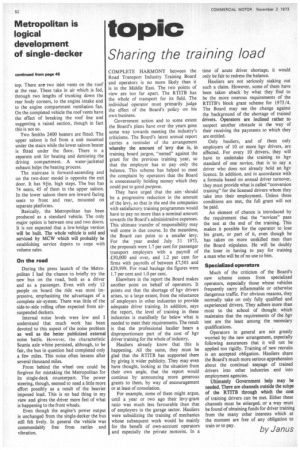Metropolitan is logical development of single-decker
Page 54

If you've noticed an error in this article please click here to report it so we can fix it.
continued from page 45
top. There are two inlet vents on the roof at the rear. These take in air which is fed, through two lengths of tninking down the rear body corners, to the engine intake and to the engine compartment ventilation fan. On the completed vehicle the roof vents have the effect of breaking the roof line and suggesting a raised section, though in fact this is not so.
Two Smiths 2400 heaters are fitted. The upper saloon is fed from a unit mounted under the stairs while the lower saloon heater is fitted under the floor. There is a separate unit for heating and demisting the driving compartment. A water-jacketed exhaust helps the heating process.
The staircase is forward-ascending and on the two-door model is opposite the exit door. It has 9-in. high steps. The bus has 74 seats, 45 of them in the upper saloon. In the lower saloon there are inward facing seats to front and rear, mounted on separate platforms.
Basically, the Metropolitan has been produced as a standard vehicle. The only major option is between one and two doors. It is not expected that a low-bridge version will be built. The whole vehicle is sold and serviced by MCW which will probably be establishing service depots to cope with volume sales.
On the road During the press launch of the Metropolitan I had the chance to briefly try the new bus on the road, both as a driver and as a passenger. Even with only 12 people on board the ride was most impressive, emphasizing the advantages of a complete air-system. There was little of the side-to-side rolling often expected from airsuspended deckers.
Internal noise levels were low and I understand that much work has been devoted to this aspect of the noise problem as well as the better publicized external noise battle. However, the characteristic Scania axle whine persisted, although, to be fair, the bus in question had completed only a few miles. This noise often lessens after several thousand miles.
From behind the wheel one could be forgiven for mistaking the Metropolitan for its single-deck counterpart. The power steering, though, seemed to need a little more effort possibly as a result of the heavier imposed load. This is no bad thing in my view and gives the driver more feel of what is happening to the front wheels.
Even though the engine's power output is unchanged from the single-decker the bus still felt lively. In general the vehicle was commendably free from rattles . and vibration.
























































































































